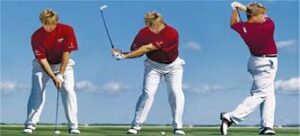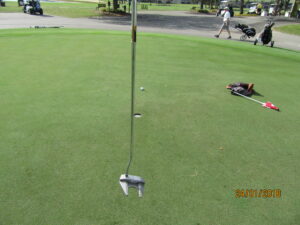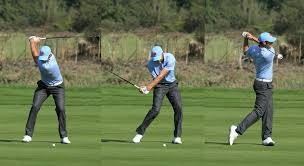You can’t be good at this game if you have blow-up holes. Why are you trying to hit your record long drive or miracle shot with pin point accuracy when the pros have a hard time doing it every time they swing a club? In many of the major tournaments MOST OF THE PROS are not even breaking par. The TV cameras only focus on the top 10 golfers who are making the miracle shots or birdie putts. The rest of the field is struggling (but not as badly as we do). Don’t try to play the same game!
Golf is a game of consistency for 18 holes with 3 to 5 unique shots on every hole. You need to set a plan to give yourself the best chance to par every hole. Here are some suggestions that you should be considering:

FOCUS! Close your mind. Its just you against the course. Make it happen!
1/ Swing at the same speed with every club. If you alter your swing speed, its difficult to change the cadence of your body with relationship to your club speed. If you don’t synchronize every motion in the attempted slower version of your swing, you will most likely end up leaving your club face open and spraying your shot wide.
2/ Adjust your distance for each club by gripping down on your club and swinging at your normal speed. When you know that you have too much club, just choke down on the grip to hit a shorter distance. This is the only way to ensure consistency.
3/ Play a game with your mind to hit 18 out of 18 fairways in regulation. Blow-up holes are typically caused by a bad drive. Every golfer should know their “big miss”. If you tend to stand too far from your ball and hit it off the toe, check your setup every time. It takes constant focus to get this right so add a tick on your score card to track your success. Check to see if you bogie or double bogies correlate with your missed drives.
4/ Hitting your GIR (Greens in Regulation), is the real focus for your game. The pros are happy when they hit 75% of their GIR so anything over 50% is a good target for you too.
5/ If you are having problems keeping your leading arm straight and creating lag with your trailing arm, you should buy a GOLFSTR+ and use it to train for a more consistent swing. Improve the cadence in your backswing and limit your backswing when you feel GOLFSTR+ touch your forearm as you make your transition to your downswing.
Learn to focus on each shot. Make your shot selection, select your club and select your last perfect shot with that club (out of your memory bank). Hold that thought and enjoy your success.
Take your mind into a trance as you recall your last perfect swing with the club that you are about to swing. Use the words “calm and relaxed” to take your mind into your focused state of mind. If you need more practice to learn the right swing, buy a GOLFSTR+ and use it for 6 swing fixes with your driver, fairway clubs, irons and putter. Buy one today at www.golfstr.com












